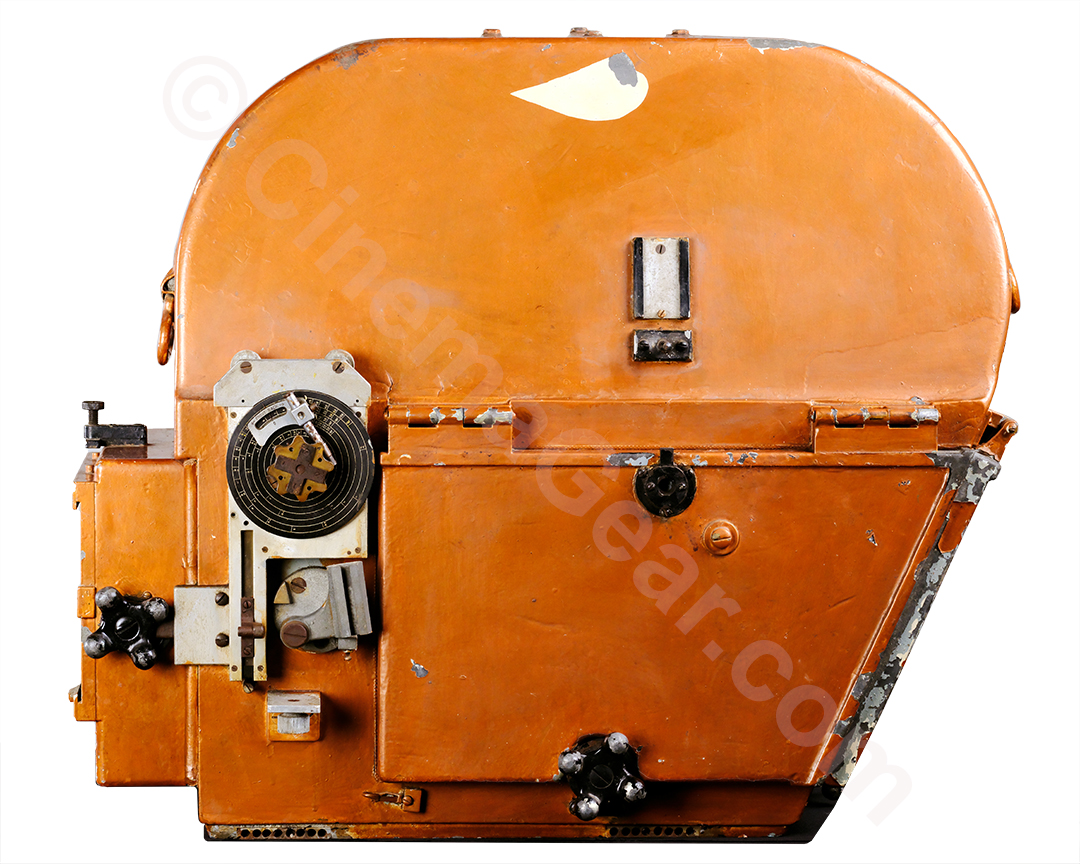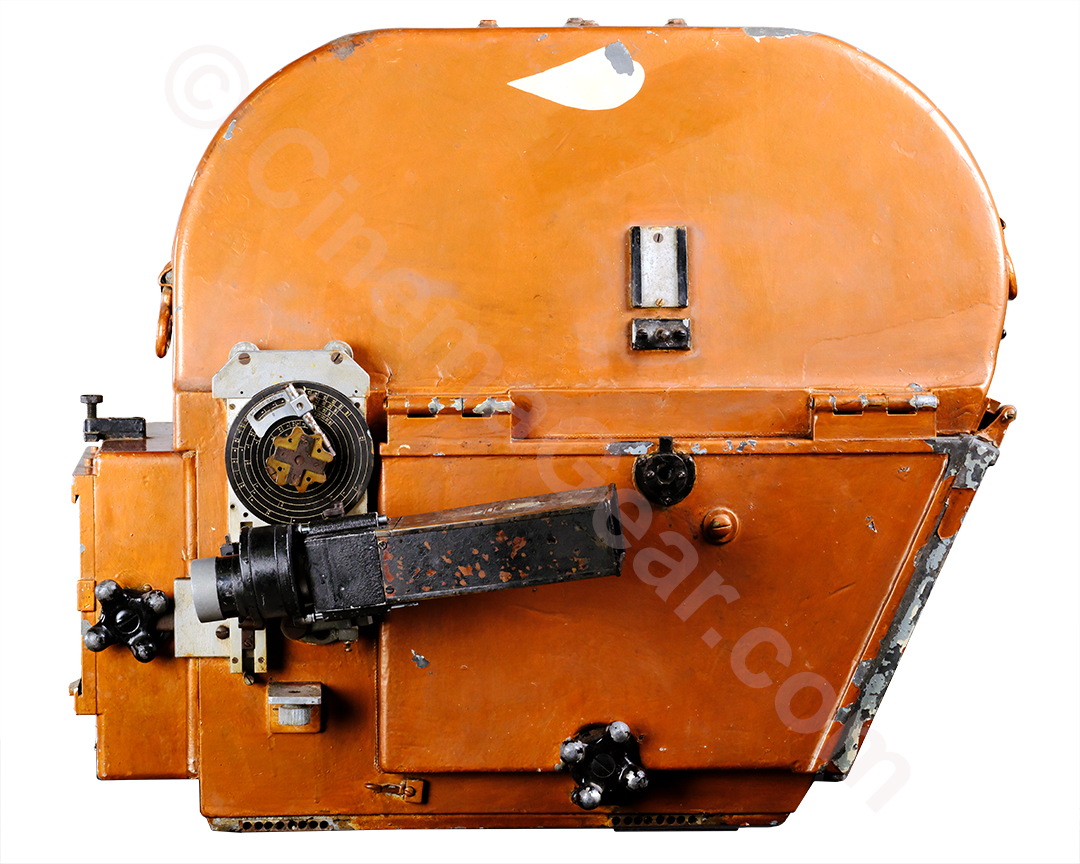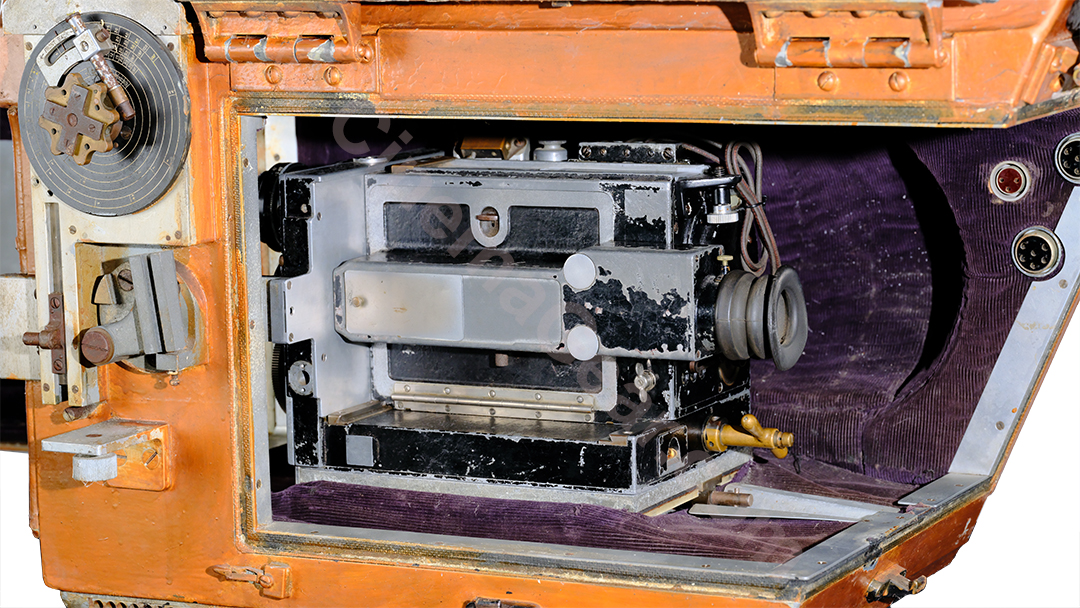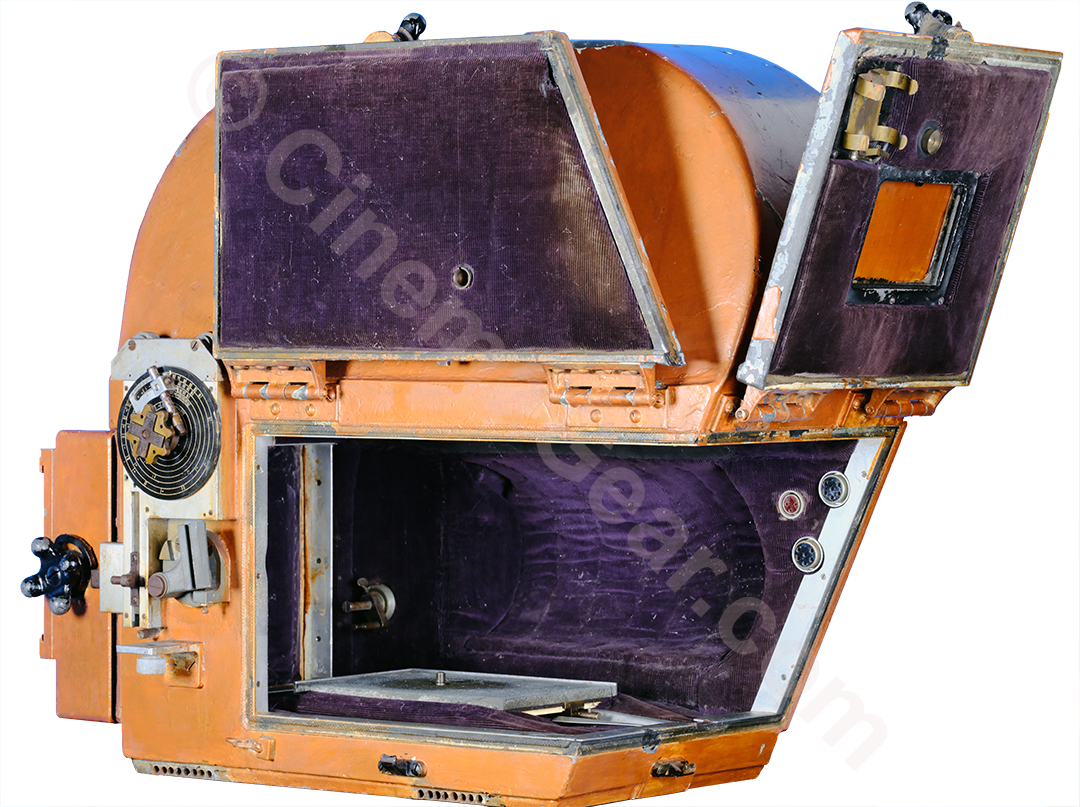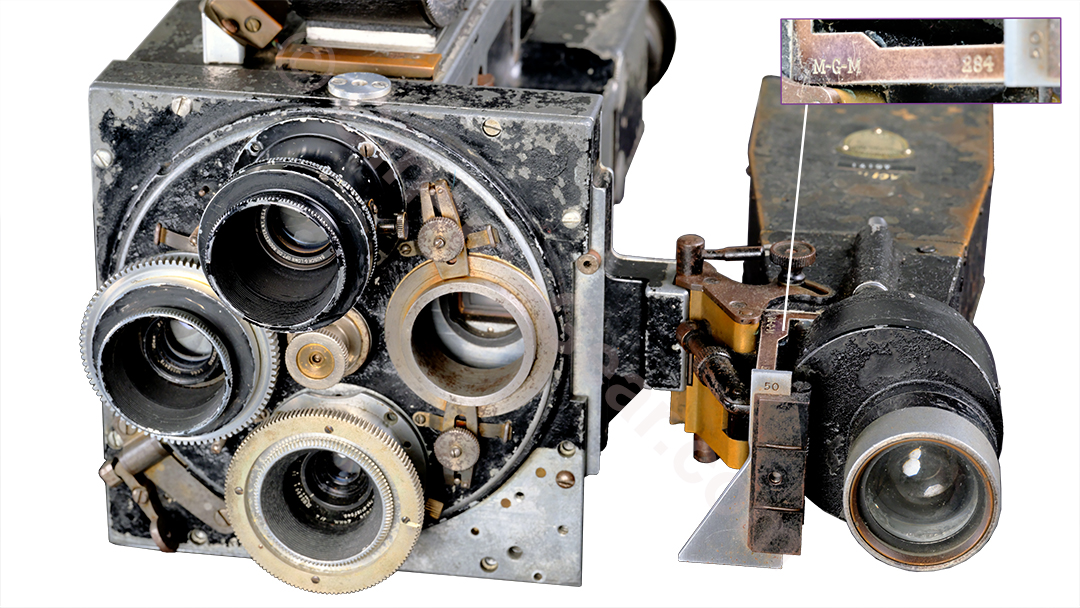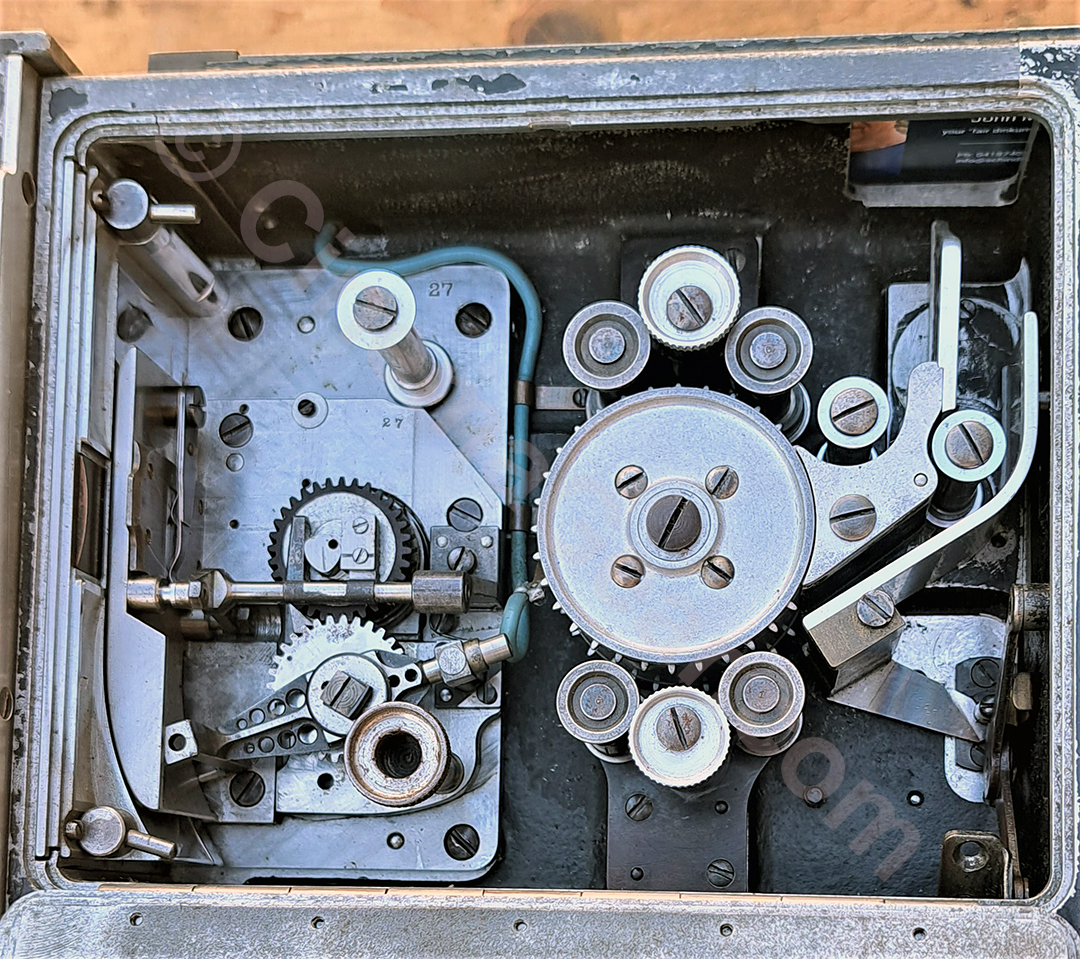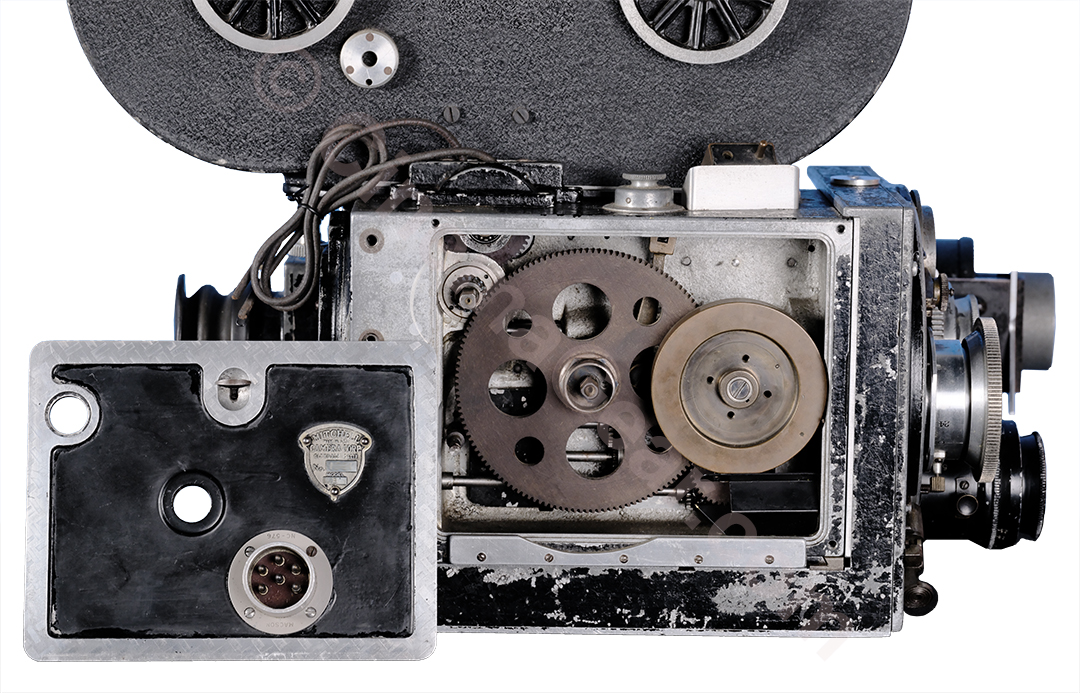
Mitchell Standard no. 27 and Original MGM Bungalow Blimp
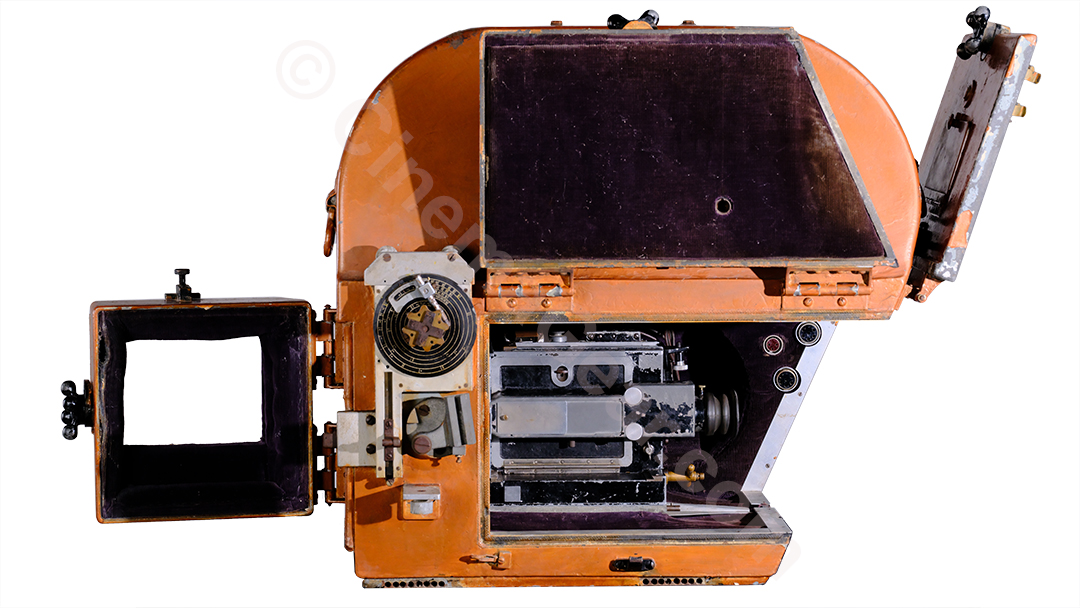
SOLD
Item #A14162
Every once in a while, some of the most unique things come across my desk. A few weeks ago, a friend of mine in Australia sent me pictures of Mitchell Standard #27 which he has been lovingly restoring. If this wasn’t unique enough, he also had something I had never seen outside of publicity photos: one of the MGM “Bungalow” sound blimps. It is always exciting to see such an early Mitchell camera, this one dating to mid-1923 and originally sold to MGM. The Bungalow sound blimp was designed by MGM cinematographer John Arnold in 1929 and, we believe, built in house by the studio. In the days of early sound films, when many cameras and cinematographers were confined to massive, roll-around sound booths, the bungalow blimp represented a major breakthrough in sound film production. It was smaller, lighter, and infinitely more portable, allowing the cameras to once again move freely about the set. During our research, we noticed that the numbers painted on the sides of the bungalow blimps matched the serial numbers of Mitchell cameras that MGM purchased in this time period. I think it is reasonable to conclude that the blimps were built to match the cameras and remained paired. While we cannot say this conclusively, we do know that Mitchell Standard #27 and this MGM bungalow blimp were purchased together and used for a number of years at a studio in Australia before my friend acquired them both.
Mitchell Standard no. 27 was originally purchased by MGM in mid-1923 according to the oddly vague Mitchell camera sales records. This was the sixth of six cameras purchased by MGM from Mitchell around this time. Metro-Goldwyn-Mayer, known colloquially as MGM, was formed in 1924 as a union of Metro Pictures Corporation (the production arm of Loew's Inc., the massive theater chain headed by Marcus Loew), Goldwyn Pictures, and the Louis B. Mayer Company. In the merger, MGM also acquired the Goldwyn studio lot in Culver City, CA which they occupied until 1986 when it was sold to Sony. The MGM Bungalow blimp had a long and illustrious career at the studio. Mitchell records indicate that MGM didn't buy a Mitchell BNC until 1956. It seems likely that Mitchell Standard no. 27 and its blimp was surplussed out of the studio as the Mitchell BNC became the camera of choice in the late 1950s.
The MGM Bungalow blimp was designed by John Arnold, director of photography, A.S.C. co-founder, and head of MGM's camera department for decades. A contemporary article in American Cinematographer describes the construction of the Bungalow as follows: "It is made of sheet lead over an iron frame, and lined inside with sound-deadening sponge-rubber. Large doors on either side and behind give easy access to the various controls of the camera, while in front, the window is replaced by a removable plate faced with sponge-rubber, which fits tightly around the lens, dampening any noise that might come out that way. The matte-box is placed on the outside of the bungalow, as is the finder, while the driving motor, being a separate unit in the Western Electric system, has its own little bungalow and tripod, and is connected with the camera by a heavy, flexible-cable drive."

"When asked about his invention, Mr. Arnold's reply was characteristically modest. 'Well,' he said, 'I saw that something had to be done to get us out of those infernal booths, so I just kept at it until I got something I knew would work.'"
John Arnold, A.S.C., quoted in American Cinematographer, September 1929.
Over Arnold's 32 year career at MGM, the Bungalow blimp was just one of dozens of inventions he contributed to enhance and improve the art of movie making. He won two Scientific and Technical Academy Awards, the first in 1938 "For their improvement of the semi-automatic follow focus device and its application to all of the cameras used by the M-G-M Studio", and the second in 1940 "For the M-G-M mobile camera crane". This is but 3 of the hundreds of inventions Arnold is credited with.
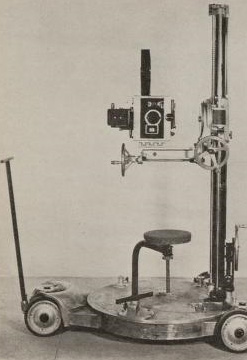
One of my personal favorites from his catalog of inventions was the rotambulator, a camera dolly and lift system that looks like it was based on a Fox Panoram dolly with an animation crane boom column that a camera platform with pan/tilt capabilities was mounted to. Mr. Arnold's history is absolutely fascinating, but we can't include every detail here. Here are a couple of articles that we found if you would like to read more about his career and inventions: a brief bio of Arnold upon his re-election to president of the A.S.C. in 1939; photographs and descriptions of the various studio-designed sound booths and blimps in 1929; and a fascinating new method to capture the paintings of Vincent Van Gogh in higher fidelity in 1956 for the MGM CinemaScope feature "Lust For Life".
Early Mitchell Standard cameras are understandably few and far between, so I greatly enjoyed the opportunity to assist my friend in the restoration process of Mitchell Standard no. 27 by telephone and email. My thanks also to Roy Wagner for his help in researching this fascinating bit of film history.
Sources:
- Scott Eyman, "Lion of Hollywood: The Life and Legend of Louis B. Mayer," Simon & Schuster: New York, 2005.
- Thomas Doherty, "When MGM Ruled Hollywood: The Rise (and Fall) of Amazon's Next Prize" The Hollywood Reporter, (March 5, 2022), View Source.
- The Editors of Encyclopedia Britannica, "Metro-Goldwyn-Mayer, Inc.," Encyclopedia Britannica, (May 8 2023), View Source.
- William Stull, A.S.C. "Solving the 'Ice-Box' Problem," American Cinematographer, (September 1929): 6-7, View Source.
- "New A.S.C Officers," American Cinematographer, (May 1940): 198, View Source.
- "John Arnold (1889-1964)," Internet Movie Database,, View Source.
- William Stull, A.S.C., "Professional Amateurs," American Cinematographer, (July 1930): 30-1, View Source.
- John Arnold, A.S.C., "A New Method of Insert Cinematography," American Cinematographer, (January 1956): 28-9, 42-4, View Source.
- "John Arnold, Cinematographer," Wikipedia,, View Source.
- George Blaisdell "Arnold Again Head of A.S.C," American Cinematographer, (May 1939): 198-9, View Source.

